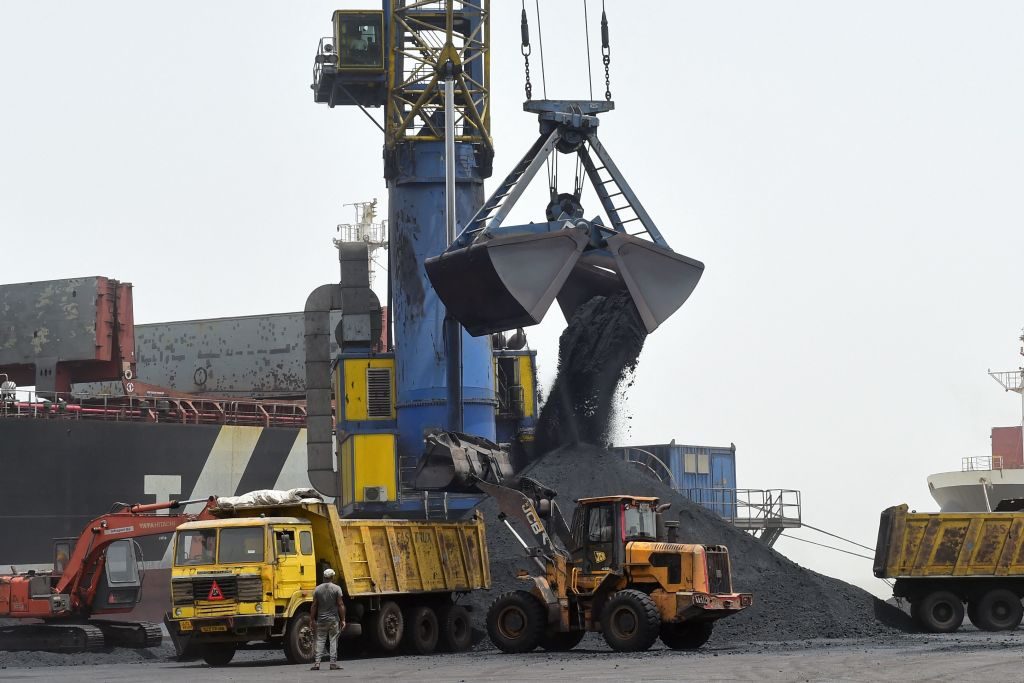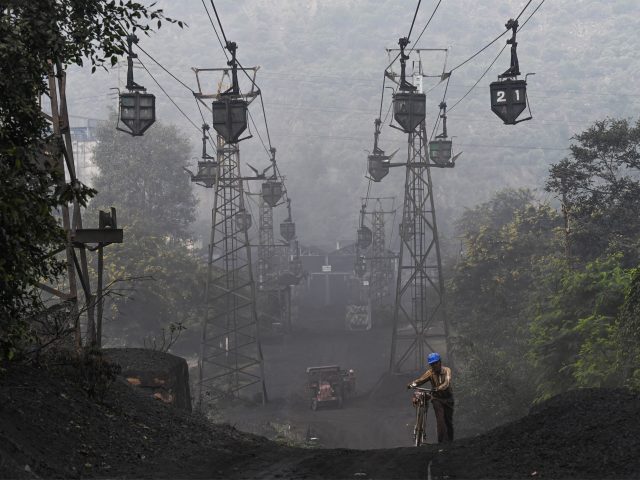The state-run Coal India will soon import coal for use in public utilities to offset the effects of a nationwide power shortage in April, Reuters reported on Saturday citing a letter by India’s federal power ministry issued that same day.
“Coal India would import coal for blending on government-to-government (G2G) basis and supply … to thermal power plants of state generators and independent power producers (IPPs),” India’s Ministry of Power wrote in a letter dated May 28 and reviewed by Reuters.
“The letter was sent to all utilities, top federal and state energy officials including the federal coal secretary and the chairman of Coal India,” according to the news agency.
“The power ministry said in the letter the decision was taken after nearly all states suggested that multiple coal import tenders by states would lead to a confusion and sought centralised procurement through Coal India,” Reuters added.

A worker stands near a heap of coal being unloaded from a ship in the vicinity of the Deendayal Port Authority seaport at Kandla in India’s Gujarat state on May 18, 2022. (SAM PANTHAKY/AFP via Getty Images)
“India stepped up pressure on utilities to increase imports to blend with local coal in recent days, warning of cuts to the supply of domestically mined coal if power plants did not build up coal inventories through imports,” the news agency noted.
Coal India is the world’s largest coal miner. Its decision to import coal on Saturday marks the first time the company has been forced to do so since 2015. The development reveals the severity of an ongoing power crisis in India that began in April when an unexpected heat wave caused temperatures to soar nationwide, spiking electricity demand. The surge in power usage since April has depleted Indian coal stocks and necessitated a federal import order for additional supplies of the fuel.
India Today recalled on May 13 that the April energy crisis largely affected sections of central and northwest India. The news magazine detailed the power outages, writing:
On April 29, India’s energy shortage touched a high of 214 million units. That was also the day when the maximum power demand touched the highest ever level of 2,07,111 megawatt. The previous high was about 7,100 MW less than that — it was in the first week of July 2021.
There were reports of power cuts and thermal plants battling coal shortages the same day. To facilitate the rising demand for coal, the [state-run] Indian Railways had to cancel many passenger trains in coal-producing areas to ensure the movement of additional coal-carrying rakes.
Data available at [the Indian federal government’s] Power System Operation Corporation shows that states like Punjab, Haryana, Rajasthan, Uttar Pradesh, Madhya Pradesh, Chhattisgarh, and Bihar faced significant energy shortages on April 29. Rajasthan’s energy shortage on that day stood at a whopping 53 million units.
Coal inventories at thermal power plants across India have declined by roughly 13 percent since April to “the lowest pre-summer levels recorded in years,” Reuters observed on May 29.
The Central Electricity Authority of India (CEA) recently predicted that India will experience further power shortages by July if it fails to replenish its waning coal stocks by the start of the summer season.
“The onset of the southwest monsoon will further hamper mining and transportation of coal from mines to power stations… If coal stocks are not replenished to adequate levels before monsoon, the country might be heading towards yet another power crisis in July-August 2022,” the Press Trust of India quoted India’s CEA as saying on May 29.
The “southwest monsoon” is a season that lasts from June to September in India and coincides with the summer months.

COMMENTS
Please let us know if you're having issues with commenting.